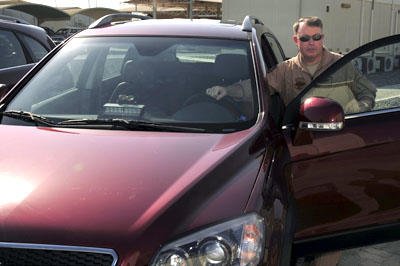
This is it -- the moment of truth. You've had your eye on a car or truck for a while. You've seen the commercials, looked over all the specs, thought about the extras and options, and now you're sitting behind the wheel, ready to take your potential new baby out for a test drive.
Well, take a few breaths. Don't let the adrenaline take over. You'll need to be as objective and observant as possible during your test drive. Just bring this check list with you, and make sure all these points are answered as you take your drive.
1. Car, meet family. Family, meet car.
If you have a family, bring them with you on your drive. Have your spouse try out the driver and passenger seats. Have your children try out the back seats. Take your time to walk around the vehicle, try all the doors, try getting in and out at different angles (you never know how much leeway you'll get in those crowded parking lots). Will everyone be comfortable during a long drive?
2. Square peg for a round hole?
We all love turbo-charged roadsters, but what will you be using the vehicle for? If you're planning on lugging tons of fishing/camping/recreational gear, does it have enough space? If you plan on driving in extreme consitions, is it powerful and reliable?
3. Access those accessories.
We're not talking about optional equipment like fancy stereo systems or DVD players -- that can wait until your customize your vehicle. Be sure that the important accessories are functional -- lights, brights, hazard lights, windshield wipers, ventilation and air conditioning.
4. It's about the drive, not the salesperson.
If the salesperson is riding with you in the car, he or she will no doubt be extolling its virtues, and how it's perfect for you. Keep yourself focused on the drive. Don't be afraid to ask the salesperson to make the big sales pitch before you drive, and request him or her to be quiet during the actual drive.
5. Give the car a workout.
Try different types of roads -- highway, boulevards, even those pothole roads you avoid on a regular basis. Get a feel for how the vehicle responds. Is the handling and ride smooth enough for you? How quiet or noisy is the ride? Is the engine making any strange sounds? How's your visibility through your windshield, and in your side and rear view mirrors? Are there any blind spots you're uncomfortable with? How does your suspensions respond to bumps and sharp turns? Try some winding roads, and different elevation changes (uphill and downhill). Does the car get sluggish when you turn on the A/C? If you have an automatic transmission, check to see if the car makes any sudden jerks during gear changes. Find a safe street to do a brake test and hit them hard. Take your time on the drive -- if you need to test a particular road or turn again, do it. If possible, drive the car all the way home and try to park it in your garage -- it would be a major letdown if you find out it doesn't fit after your buy it...
6. Post-drive Post-mortem
After the test drive is over, take a few minutes to make notes on anything you noticed during the drive. Give the exterior of the car a thorough once-over. Pop the hood and see if anything seems amiss. Give the body a good inspection -- is everything painted smoothly? Are there are minor chips or dings? If you have a camera with you, this is a good opportunity to take photos of anything you have a question about, so you can save them for future reference.
7. Be honest with everyone -- including yourself.
If something about the test drive doesn't sit well with you, talk about it with your family and the salesperson. If there's an optional accessory that would improve your driving experience, discuss it, and see if you can get a discount. Don't be swayed if something hasn't been answered to your satisfaction. There's nothing wrong with taking a day or two to make a final decision. In the end, remember that you can always walk away from a purchase -- there's lots of vehicles out there. There may be even another model of the same car at a different dealership that better suits you.









